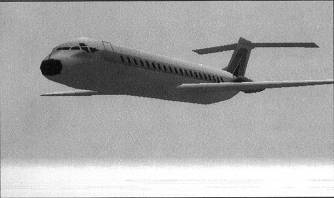Microsoft Flight Simulator Handbook
by Jonathan M. Stern
Loss of Orientation
The other error to avoid when flying on instruments is loss of orientation. This loss refers to geographical orientation as opposed to spatial orientation. The in-flight breakup discussed in the previous section was the consequence of spatial disorientation. Always be aware of the aircraft's location. This is important for two reasons: it's good to know where the nearest airport is in an emergency (such as engine failure or in-flight fire) and it's obviously good to avoid crashing into terrain or obstacles. After all, the only good way to bring the airplane back onto terra firma is in a landing configuration.
For a demonstration of the adverse consequences of navigational error, move your Cessna 182RG to the Seattle Tacoma International Airport by using the World/Airports menu and the Seattle area scenery. Follow these steps:
- Take off from Seattle and make a right turn to a 140° heading while climbing to 10,000 feet.
- Enter the Nav/Com/Navigation Radios menu, and set the NAV 1 OBS Heading to 121 degrees. Then press Enter twice.
- Select Nav/Com/Autopilot and change the Autopilot Switch to Connected (On).
- Select Nav Hold and set Altitude Hold to 10,000 feet. Then press Enter twice.
- Victor 4 is an instrument flight airway that runs southeast from Seattle. It runs along the 101° radial from the Seattle VORTAC, well clear of Mount Rainier. Unfortunately for you, the settings that you just made with the autopilot have you flying 20° off course, headed for 14,410 foot tall Mount Rainier.
- Imagine your surprise if you suddenly realized that the clouds ahead (once you get 40 miles from Seattle) were cumulus granite (see Figure 10.4)!
Figure 10.4. Mt. Rainier protrudes between overcast layers just above the fuel gauges.
- This, by the way, is a mistake that many general aviation pilots and yes, even some airline pilots have made in the past (see Figure 10.5). From here on, let's agree that you will always endeavor to maintain good positional awareness. Whether in simulation or in the real airplane, you do not want to become a statistic.
Figure 10.5. Another reason not to stray off course is that you never know what other surprises you may find in or above the clouds.
Table of Contents
Previous Section: The In-flight Breakup
Next Section: Avionics
